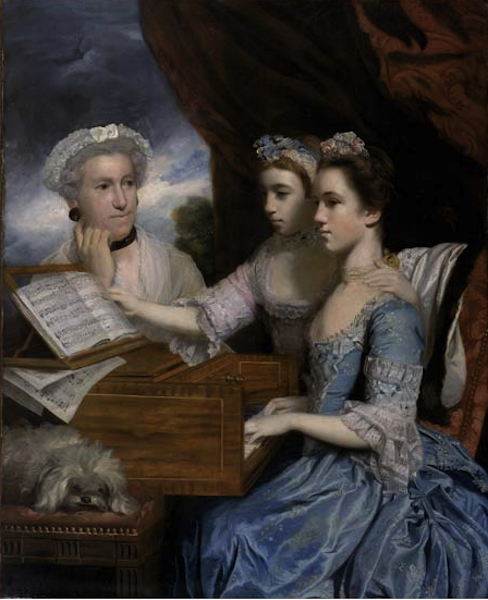
We learn, sometimes, in the most unexpected places—in this case, from the memoir of Eric Hebborn, a saucy and unapologetic forger of old master drawings.* His art education, in England in the ‘50s, was of the most academic sort, and his first job was in the workshop of an art restorer where “restoration” could mean anything from cleaning and touching up cracks to radical reworking to make a piece more saleable.
He makes an interesting argument: “Many old pictures are bad old pictures, some so bad it would be difficult to make them worse. Even good pictures may on occasion be improved by some deliberate alteration. An example could be the well known case of Joshua Reynolds’s portrait group showing the Payne sisters at the spinet accompanied by their mother. . . With the mother, the composition is overcrowded. Without her, it is spacious and charming.”
![Fred Spencer: The Misses Paine after Reynolds [nationaltrustcollections.org.uk]](http://www.stanwashburn.com/wp-content/uploads/2013/09/F.-Spencer-The-Misses-Paine-after-Reynolds.jpg)
Hebborn, of course, is justifying his profession of fakery, but in this case he has a point. The mother is oddly jammed into the piece, which seems squashed in any case. At some point in the 19th Century she was painted out. To the left we have an early 20th Century copy of the altered work. I wouldn’t call it “spacious and charming,” but it’s certainly an improvement. Later the overpainting was removed, and Mom restored. So the question is, are we better off with a third-rate Reynolds in its original if clunky state, or with a marginally better painting?
*Drawn to Trouble: Confessions of a Master Forger Random House 1991